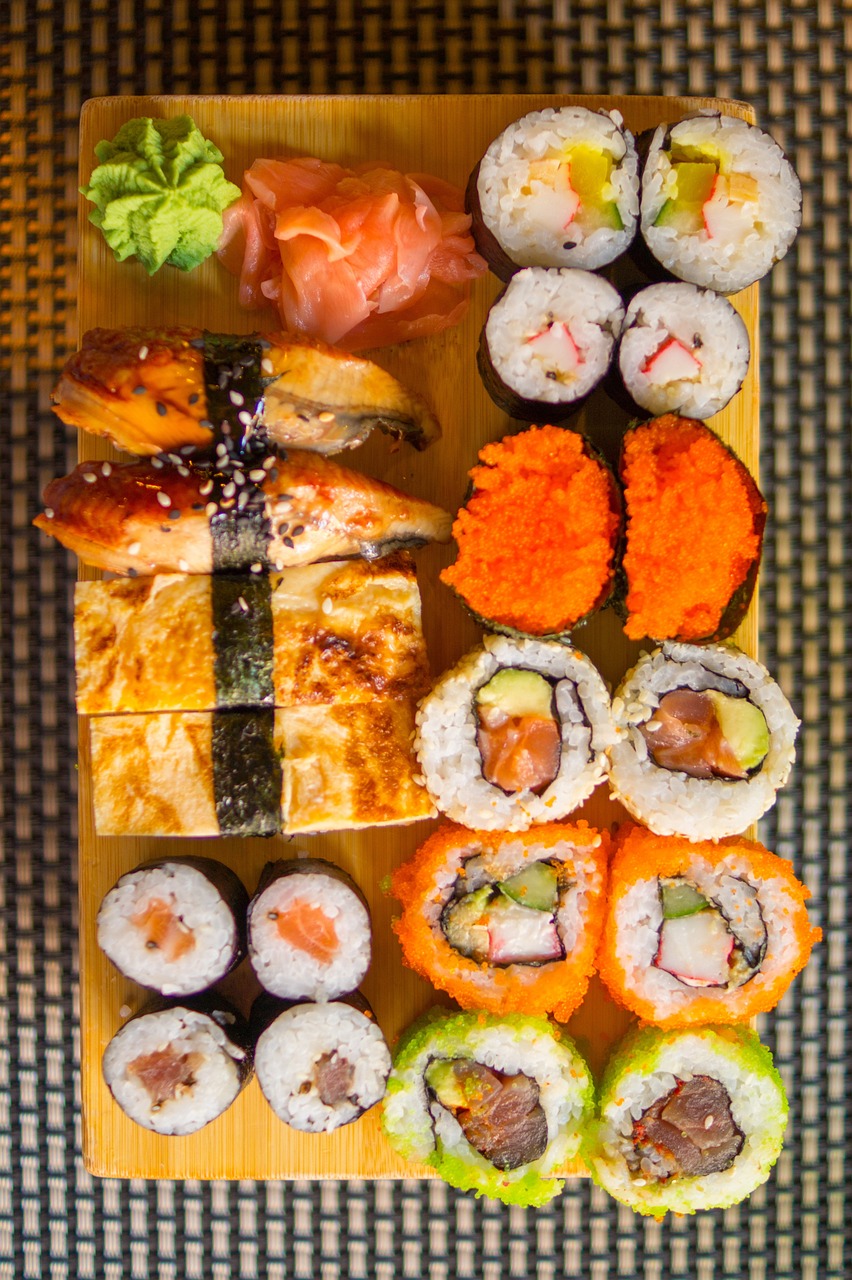Thankfully, we have an amazing sushi shop within walking distance from our place, but every once in a while, I get the itch to make it myself.
Origins of Sushi
Sushi is a common dish in Japan and Japanese restaurants around the world. But it’s thought that it may actually date back to the 2nd century BC when it originated from a Chinese dish called narezushi. It’s believed to have then spread to Japan in the 8th century. And by the 18th century, sushi restaurants were wildly popular in Japan.
The following is our inspired, veggie-packed version made with brown rice instead of white rice.
How to Make Brown Rice Sushi
If you don’t have a sushi mat, I’ve got you covered. Check out our How to Make Sushi Without a Mat tutorial.
But because they’re so affordable and make the process more streamlined, I picked up a mat for this version.
It may not look very easy, but sushi is truly easy to make. I compare it to rolling spring rolls. Sure, your first few are a little imperfect. But once you get the hang of it, it’s so easy, and you feel incredibly accomplished making your restaurant-worthy food at home.
All in all, this sushi requires just ten simple ingredients (more or less depending on your fillings of choice) and comes together in less than 1 hour.
It starts with wholesome brown rice that’s mixed with a vinegar mixture to sweeten it slightly and make it sticky so it’s easier to work with.
I tested it without the vinegar mixture, and trust me, it did not go well. It would be best if you had the rice sticky so it formed a roll.
For fillings, I went with roasted red pepper, cucumber, sprouts, and carrots.
I also love veggie rolls with avocado, asparagus, radish, and pickled veggies. Dream big, friends. The options are endless.
Make this for weeknight meals when you want something hearty and other than a salad (although there is no shame in a salad).
Ingredients
RICE
- 1 2/3 cups water
- 1 cup short-grain brown rice, rinsed
- 3 Tbsp rice wine vinegar
- 2 Tbsp organic cane sugar
- 1/2 tsp sea salt
SUSHI
- Four sheets of nori (dried seaweed)
- One roasted or fresh red bell pepper* (sliced)
- 1 cup thinly sliced carrots
- 1 cup thinly sliced cucumber
- 1 cup sprouts (Alfalfa is best)
FOR SERVING optional
- Tamari (or soy sauce if not gluten-free)
- Pickled ginger
- Wasabi
- Sesame seeds
Instructions
- In a medium saucepan, bring water to a boil, then add rice, swirl to coat, lower heat to low, and cover. Simmer until water is completely absorbed and rice is tender – about 18-25 minutes. Drain off any excess moisture if there is any.
- In the meantime, add vinegar, sugar, and salt to a small saucepan and heat over medium heat, stirring occasionally until sugar and salt are dissolved. Place in a jar or dish and cool in the fridge until rice is ready.
- Once the rice is done, kill the heat, add the cooled vinegar mixture, and stir with a rubber spatula or fork so as not to overmix. It will appear wet but will dry up as you lightly start to release heat. It should be sticky and completely dry once it’s ready.
- While the rice finishes cooking, prep your veggies by chopping them into thin pieces. If they’re too bulky, they won’t allow the sushi to roll well.
- Now it’s time to roll: Grab your sushi mat and top it with a sheet of nori. Using your hands dipped in water (to avoid sticking), pat a very thin layer of rice all over the nori, making sure it’s not too thick, or your roll will be all rice and no filling (see photo).
- Then, arrange a generous serving of your veggies or, if preferred, fill in a line at the bottom 3/4 of the rice closest to you (see photo).
- Start to roll the nori and rice over with your fingers, and once the veggies are covered, roll the mat over to mold and compress the roll. Continue until it’s all the way rolled up. I find slicing with a very sharp, serrated knife yields the best results. Repeat until all rice and fillings are used up – about four total rolls (amount as original recipe is written // will vary if batch size is altered).
- Serve immediately with pickled ginger, tamari or soy sauce, and wasabi. Best when fresh, though leftovers keep covered in the refrigerator for up to 2 days.

